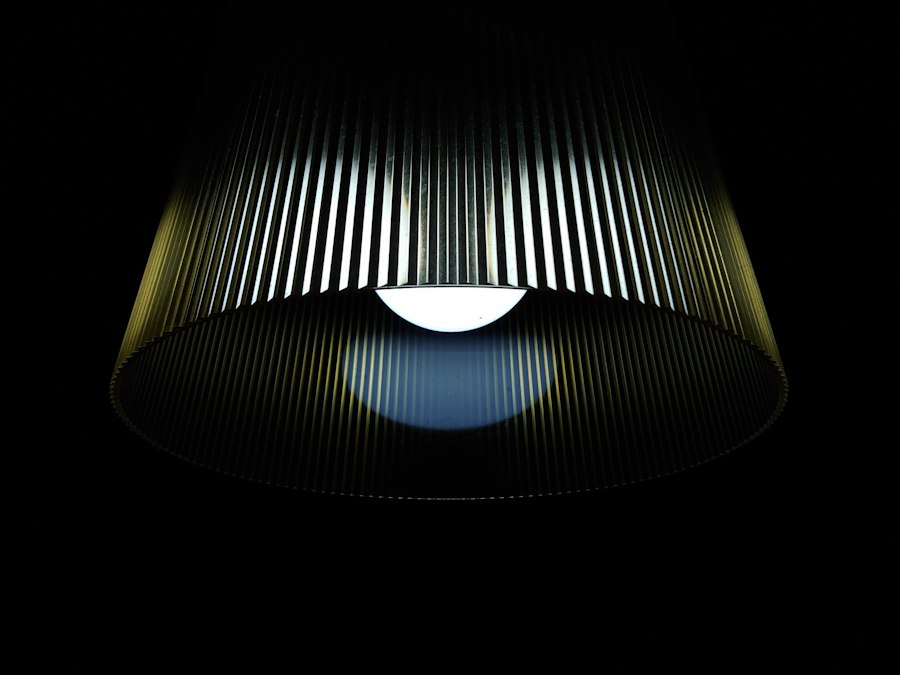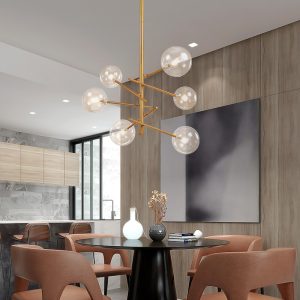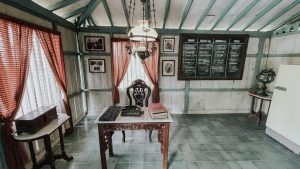Light up your space: A guide to stunning interior design lighting fixtures
7 min readLighting is an essential element in interior design that can greatly impact the mood and ambiance of a space. It has the power to transform a room from dull and lifeless to vibrant and inviting. In this blog post, we will explore the importance of lighting in interior design and discuss various lighting fixtures, techniques, and trends that can enhance the style and functionality of your home.
The Importance of Lighting in Interior Design
Lighting plays a crucial role in setting the mood and ambiance of a space. It can make a room feel cozy and intimate or bright and energetic. The right lighting can highlight architectural features, artwork, and other focal points in a room, while the wrong lighting can make a space feel flat and uninviting.
There are three main types of lighting: ambient, task, and accent. Ambient lighting provides overall illumination to a space and is usually achieved through ceiling-mounted fixtures or recessed lights. Task lighting is focused lighting that is used for specific activities such as reading or cooking. Accent lighting is used to highlight specific objects or areas in a room, such as artwork or architectural features.
Illuminate Your Home with These Stunning Lighting Fixtures
Choosing the right lighting fixtures can add style and personality to your space. There are countless options available, ranging from classic chandeliers to modern pendant lights and sleek floor lamps. When selecting lighting fixtures, it’s important to consider the style and function of the room.
Chandeliers are a timeless choice that can add elegance and drama to any space. They come in a variety of styles, from traditional crystal chandeliers to more modern designs with sleek lines and minimalist features. Pendant lights are another popular option that can make a statement in any room. They are versatile and can be used as task lighting over a kitchen island or as accent lighting in a living room or bedroom. Floor lamps are not only functional but also serve as decorative pieces that can add height and visual interest to a space.
Choosing the Right Lighting Fixtures for Your Space
When selecting lighting fixtures, it’s important to consider the size, shape, and color of the fixture. The size of the fixture should be proportionate to the size of the room. A small fixture in a large room may get lost, while a large fixture in a small room may overwhelm the space. The shape of the fixture should also complement the overall style of the room. For example, a round chandelier may work well in a room with soft curves and organic shapes, while a linear pendant light may be more suitable for a modern and minimalist space.
The color of the fixture can also have an impact on the overall look and feel of the room. A metallic finish can add a touch of glamour and sophistication, while a colorful fixture can make a bold statement and add a pop of color to a neutral space. It’s important to choose a color that complements the existing color palette of the room.
Creating a Mood with Different Lighting Techniques
In addition to selecting the right lighting fixtures, there are various techniques that can be used to create different moods and ambiance in a space. Dimming is one technique that allows you to adjust the brightness of the lights to create a soft and intimate atmosphere or a bright and energetic one. Layering is another technique that involves using multiple sources of light at different heights and angles to create depth and visual interest in a room. Color temperature is also an important factor to consider when creating a mood with lighting. Warm white light can create a cozy and inviting atmosphere, while cool white light can make a space feel bright and refreshing.
Incorporating Natural Light into Your Interior Design

Natural light is an invaluable asset in interior design as it not only provides illumination but also has numerous benefits for our well-being. It can improve our mood, increase productivity, and even enhance the quality of our sleep. When designing a space, it’s important to maximize the use of natural light.
There are several ways to maximize natural light in a space. One way is to use light-colored window treatments that allow natural light to filter through while still providing privacy. Another way is to strategically place mirrors in a room to reflect and amplify natural light. Mirrors can be placed opposite windows or in dark corners to bounce light around the room. Additionally, keeping windows clean and free of obstructions such as furniture or heavy curtains can also help maximize natural light.
How to Layer Lighting for a Warm and Inviting Space
Layering different types of lighting is a key technique in creating a warm and inviting atmosphere in a space. By combining ambient, task, and accent lighting, you can create a well-balanced and visually appealing room.
In the living room, for example, you can use recessed lights or a central pendant light as ambient lighting, table lamps or floor lamps as task lighting for reading or other activities, and wall sconces or picture lights as accent lighting to highlight artwork or architectural features. In the bedroom, you can use a combination of overhead lighting, bedside table lamps, and wall-mounted reading lights to create a cozy and relaxing atmosphere. In the kitchen, you can use under-cabinet lighting as task lighting for food preparation, pendant lights over the island or dining table as ambient lighting, and recessed lights as accent lighting to highlight the backsplash or other design features.
The Benefits of LED Lighting in Your Home
LED lighting has become increasingly popular in recent years due to its numerous advantages. LED lights are energy-efficient and consume less electricity than traditional incandescent bulbs, which can help reduce energy costs. They also have a longer lifespan, lasting up to 25 times longer than incandescent bulbs. LED lights are also more durable and resistant to shock and vibration, making them ideal for areas with high foot traffic or where the lights may be subject to frequent movement.
LED lights are available in a variety of colors and can be dimmed to create different moods and ambiance in a space. They also emit less heat than traditional bulbs, making them safer to use and reducing the risk of fire. LED lights are also environmentally friendly as they do not contain harmful substances such as mercury.
Using Lighting to Highlight Your Home’s Best Features
Lighting can be used to draw attention to architectural features, artwork, and other focal points in a space. By strategically placing lights and adjusting their intensity, you can enhance the beauty and functionality of a room.
In a living room, for example, you can use recessed lights or track lighting to highlight a fireplace or a built-in bookshelf. In a dining room, you can use a chandelier or pendant lights to draw attention to the dining table. In a bathroom, you can use wall sconces or vanity lights to highlight a mirror or a piece of artwork. By using lighting to highlight these features, you can create a focal point in the room and add visual interest.
The Latest Trends in Interior Lighting Design
Like any other aspect of interior design, lighting design is constantly evolving and there are always new trends emerging. One current trend is the use of minimalist lighting fixtures that have clean lines and simple designs. These fixtures are often made from materials such as metal or glass and have a sleek and understated look that can complement a variety of interior styles.
Another trend is the use of smart lighting systems that allow you to control the lights in your home using your smartphone or voice commands. These systems often come with features such as dimming, color changing, and scheduling, allowing you to create different moods and ambiance in your space with ease.
DIY Lighting Projects to Enhance Your Home’s Style
If you’re feeling creative and want to add a personal touch to your space, there are plenty of DIY lighting projects that you can try. These projects are not only fun and rewarding but also affordable and can add a unique and stylish element to your home.
One idea is to create a pendant light from a basket. Simply remove the handle from a woven basket, attach a light socket and cord, and hang it from the ceiling. This can create a rustic and bohemian look that adds warmth and texture to a space. Another idea is to use string lights to create a cozy ambiance. You can hang them on the wall, drape them over furniture, or place them in glass jars or lanterns for a magical effect.
In conclusion, lighting is an essential element in interior design that can greatly impact the mood and ambiance of a space. By choosing the right lighting fixtures, using different lighting techniques, and incorporating natural light, you can create a personalized and inviting space that reflects your style and enhances your well-being. So don’t be afraid to experiment with different lighting options and have fun creating a space that is uniquely yours.




